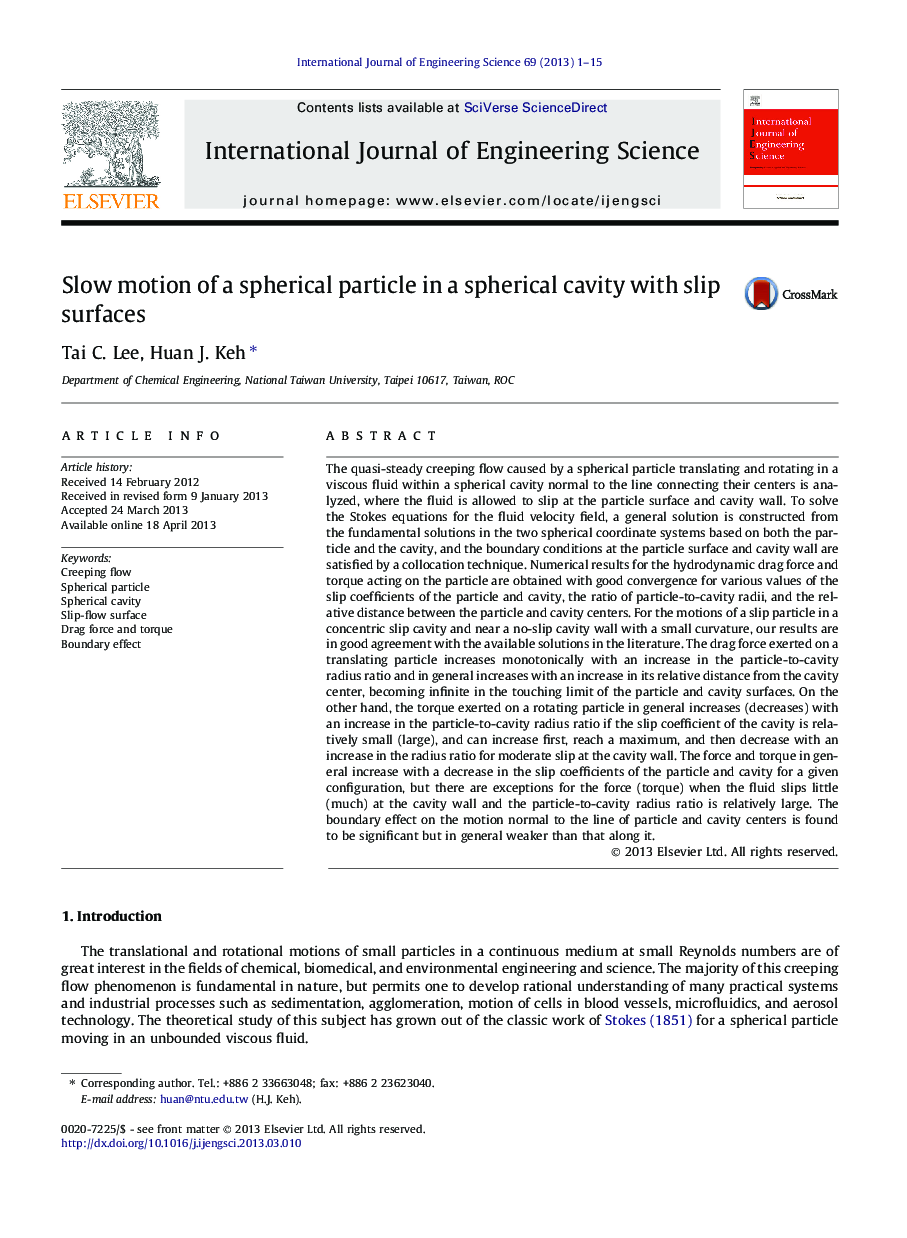| کد مقاله | کد نشریه | سال انتشار | مقاله انگلیسی | نسخه تمام متن |
|---|---|---|---|---|
| 825012 | 1470001 | 2013 | 15 صفحه PDF | دانلود رایگان |

The quasi-steady creeping flow caused by a spherical particle translating and rotating in a viscous fluid within a spherical cavity normal to the line connecting their centers is analyzed, where the fluid is allowed to slip at the particle surface and cavity wall. To solve the Stokes equations for the fluid velocity field, a general solution is constructed from the fundamental solutions in the two spherical coordinate systems based on both the particle and the cavity, and the boundary conditions at the particle surface and cavity wall are satisfied by a collocation technique. Numerical results for the hydrodynamic drag force and torque acting on the particle are obtained with good convergence for various values of the slip coefficients of the particle and cavity, the ratio of particle-to-cavity radii, and the relative distance between the particle and cavity centers. For the motions of a slip particle in a concentric slip cavity and near a no-slip cavity wall with a small curvature, our results are in good agreement with the available solutions in the literature. The drag force exerted on a translating particle increases monotonically with an increase in the particle-to-cavity radius ratio and in general increases with an increase in its relative distance from the cavity center, becoming infinite in the touching limit of the particle and cavity surfaces. On the other hand, the torque exerted on a rotating particle in general increases (decreases) with an increase in the particle-to-cavity radius ratio if the slip coefficient of the cavity is relatively small (large), and can increase first, reach a maximum, and then decrease with an increase in the radius ratio for moderate slip at the cavity wall. The force and torque in general increase with a decrease in the slip coefficients of the particle and cavity for a given configuration, but there are exceptions for the force (torque) when the fluid slips little (much) at the cavity wall and the particle-to-cavity radius ratio is relatively large. The boundary effect on the motion normal to the line of particle and cavity centers is found to be significant but in general weaker than that along it.
Journal: International Journal of Engineering Science - Volume 69, August 2013, Pages 1–15